The developer provided Play Critically with a review code for this videogame.
Dyadic is a puzzle platformer where one or two players take control of a pair of figures in a temple who try to correct a mistake that is having supernatural consequences. In the introduction, the pair come across a jade statue in a shrine. When one of them picks up the statue, the temple is sundered by an earthquake, sending the pair tumbling into the temple’s depths. They soon discover the cause of the destruction: A dragon, angered by the removal of the statue, is on a rampage through the temple. Working as a team, the player characters must find their way back through the temple to return the jade statue to its altar and calm the dragon, a quest that is complicated by the temple’s damaged state and the gauntlet of traps that protect it.
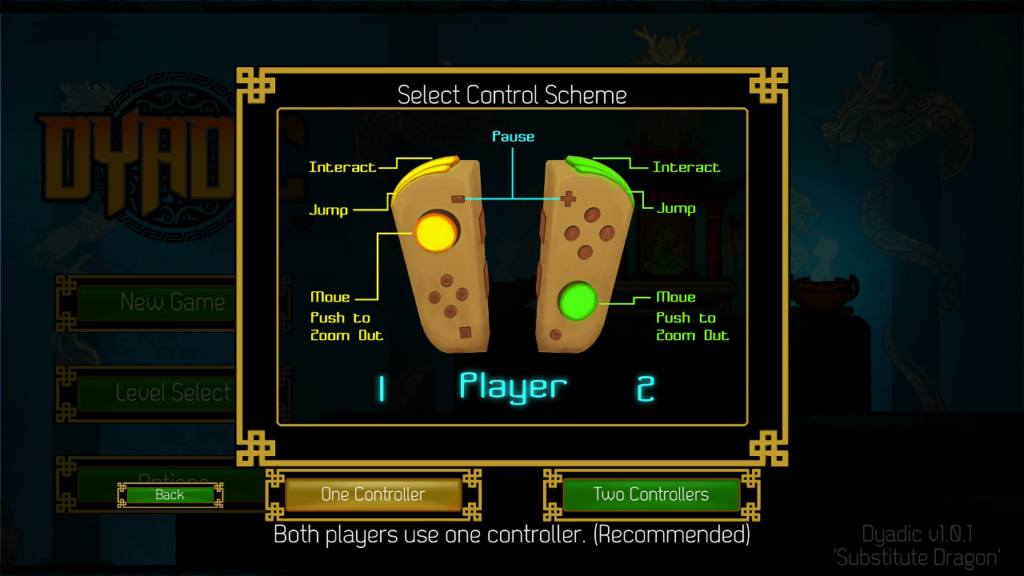
The best thing about Dyadic is how it is intended to be played. Though nothing prevents me from playing by myself, it is designed to be played by two players. When a new game is begun, I am prompted to select a control scheme: One Controller, or Two Controllers. When Two Controllers are selected, each player controls one of the player characters using their own controller.
The One Controller option is explicitly highlighted as the “recommended” one. When it is selected, both players use a single controller. Player One holds the controller’s left half in their left hand, guiding their player character across the side-scrolling platforming environments using the joystick to move and the shoulder buttons to jump and interact with objects. Player Two does the same with their player character, only with the controller’s right half in their right hand.
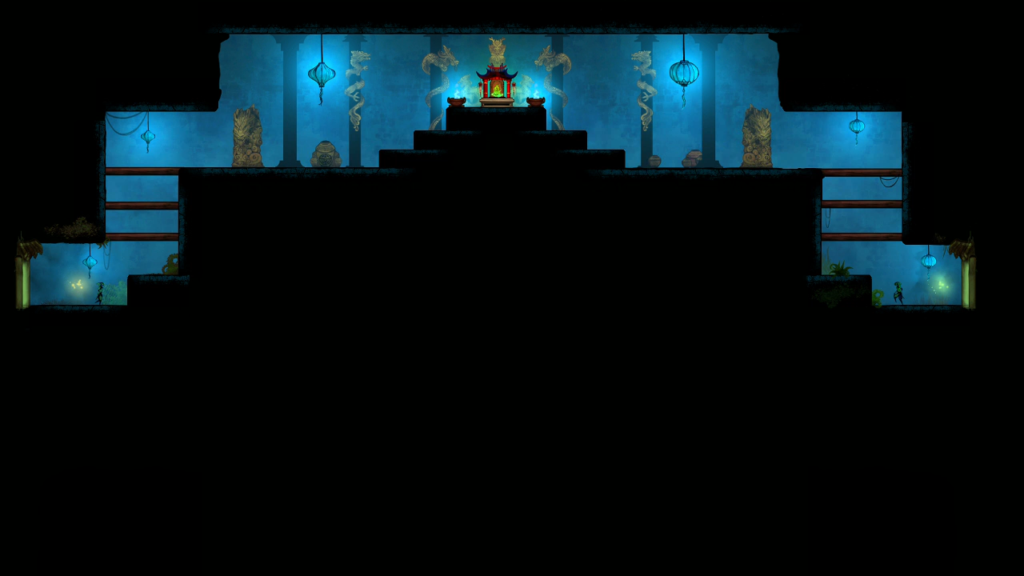
The fumbling chaos resulting from two players using a single controller to control two different player characters is where much of Dyadic’s charm comes from. It’s much more difficult to accomplish than it sounds. Not sharing a controller removes something from the fundamental experience, as does using One Controller mode to play by myself, controlling the first player character with my left hand and the second player character with my right.
Beyond its controller-sharing conceit, Dyadic is an ordinary puzzle platformer built on relay-style puzzles. In most of the nineteen levels, each player character is closed off in their own section of the level. The actions they perform in their section affect what happens in the other player character’s section. The two must work off each other to reach each level’s end, bringing them one step closer to returning the jade statue to its altar and quelling the dragon’s rage.
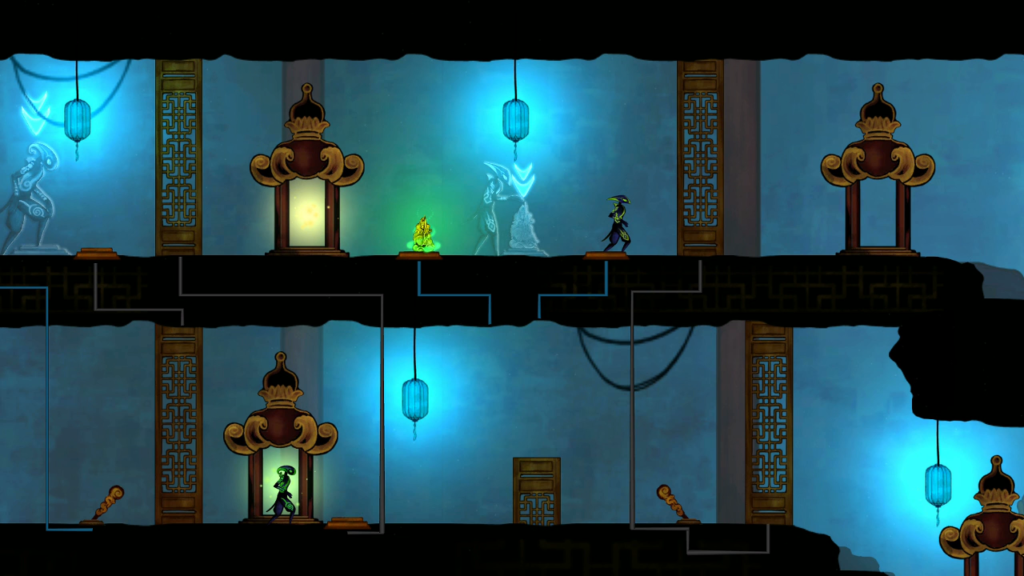
The first level eases the players into how they must work as a team even when they are separated. A lever in one player’s section opens a door in the other’s, allowing them to move forward. There, the other player finds a pressure plate on the floor which, when stood upon, opens a door in the other player’s section. They trade back and forth until they reach the end of the level.
The further into Dyadic’s nineteen levels the players progress, the more complicated puzzles become. The jade statue becomes more than a macguffin which must be carried across each level. It becomes a useful tool itself, weighing down pressure plates and leaving one of the player characters free to move elsewhere in their section. Later, cogs that activate machinery and mirrors that reflect beams of light into magical gems are introduced. For situations where one player needs an item which is in the other player’s section of the level, they can pass those items through a pneumatic tube system.
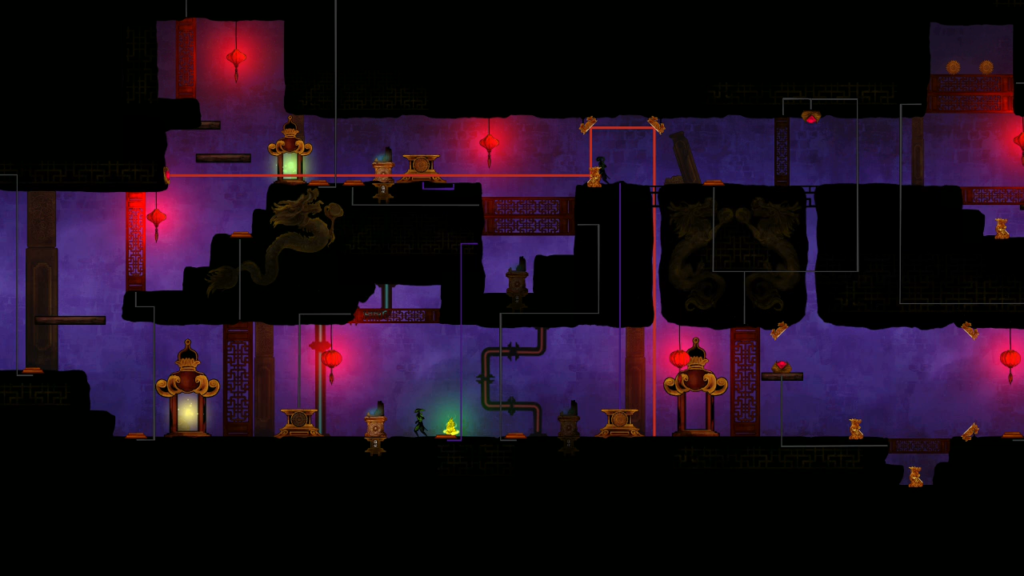
Every puzzle in Dyadic may be summed up thusly: There is a door or doors that need to be opened. The players must find the mechanisms that open them and the order in which they must be activated. Some puzzle configurations appear multiple times; a Fox, Chicken, and Grain-style puzzle involving three pressure plates and three doors is especially prevalent, appearing in multiple levels with little variation. A short ninety minute playtime ensures Dyadic ends long before it feels repetitious.
When the player characters return the jade statue to its altar, I am left with a feeling of uncertainty: Is that it? This feeling does not come from dissatisfaction or unfulfillment, but rather from unanswered questions. While guiding the player characters through the levels, I catch glimpses of seemingly-inaccessible rooms. Is there some hidden opening in a wall that lets me access these spaces? Are there alternate puzzle solutions that reveal a new entrance? If so, what new understanding of the temple, the dragon, and the player characters might I glean from its contents?
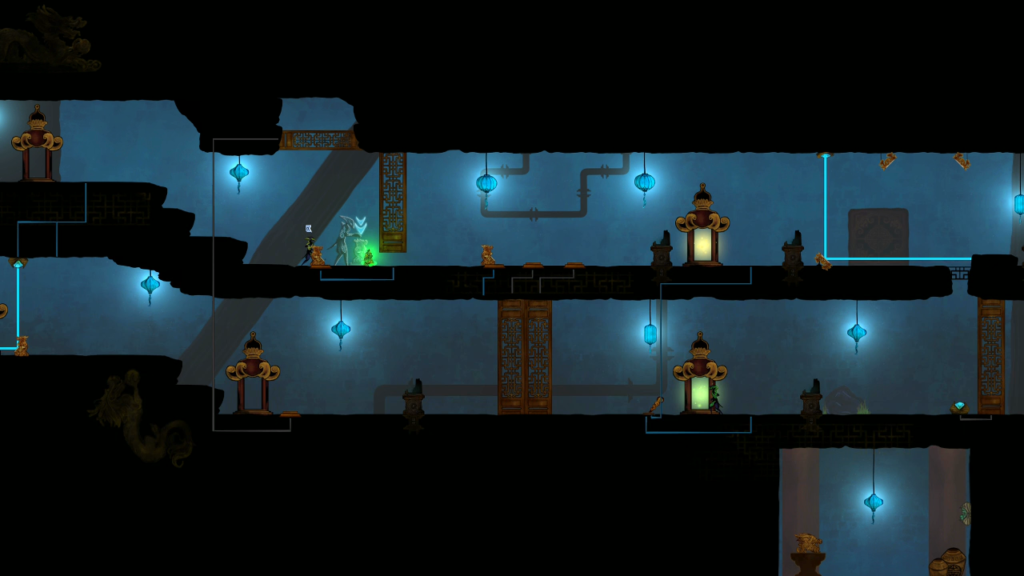
Similarly, there seems to be two solutions to the final level. In the faster, messier solution, only one of the player characters returns the statue to its altar and I witness the end credits sped up to comical and unreadable speeds. If I find the slower, safer path, then both player characters return the statue, and I am allowed to view the credits at a normal speed. Otherwise there seems to be no difference between the alternate “endings.” I return to the finale a third time to search for a third solution, but find none.
Upon finishing Dyadic I am haunted by kernels of doubt. Were those inaccessible rooms leftovers from the design process, visible yet nonessential? Is there a third solution to the final level? There are no apparent answers on offer to either of these questions, leaving me wondering if I have missed something important.
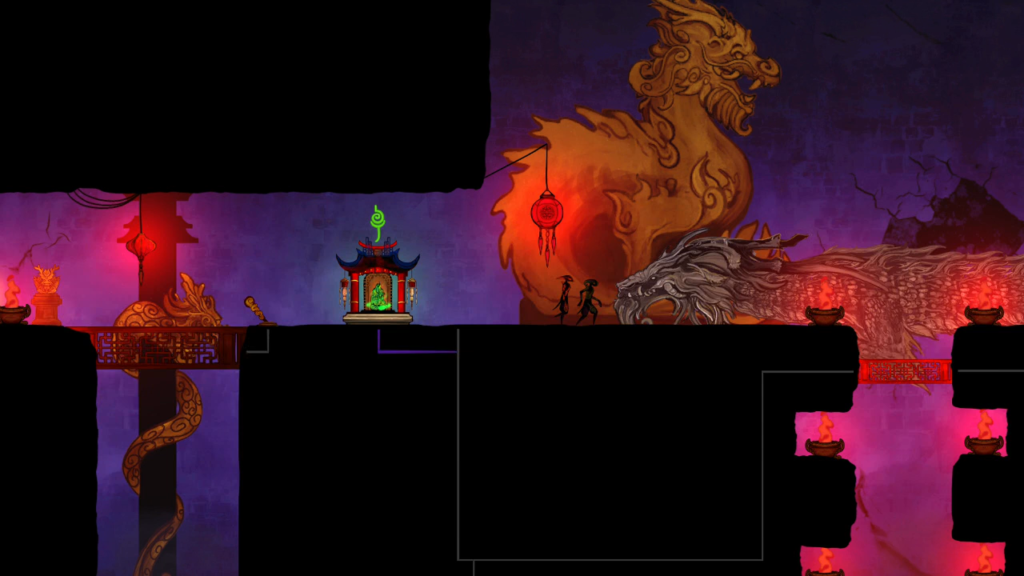
Dyadic is at its best when it is played as it is intended: by two players, sitting side-by-side, grasping a single controller between them. If two players cannot share one controller, or there is only one player available, its puzzles are engaging enough on their own to be satisfying, though it is clear that I am missing out on the fundamental experience. Beyond this design element, its puzzle platforming is engaging yet not especially difficult. Only one puzzle makes me stop and think for a few minutes, and not one leaves me stumped. It’s a great cooperative videogame, but absent this option, it is merely a satisfactory puzzler.